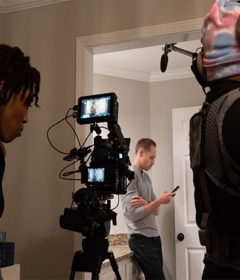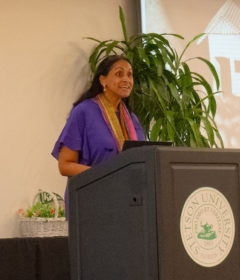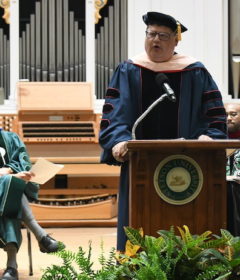Hand Art Center Re-opens Virtually with Bluemner, Soviet Superhero Exhibits
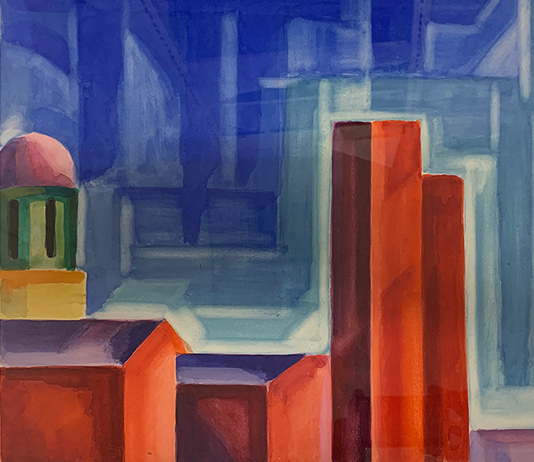
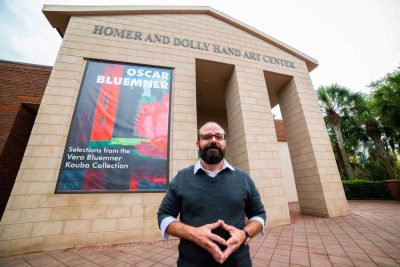
A treasure trove of artwork will be telling tales about modern art, the Russian Civil War and Silver Springs, Sept. 8-Oct. 15, at the Homer and Dolly Hand Art Center’s exhibits website.
Twenty-three years ago, Vera Bluemner Kouba, the daughter of modern artist Oscar Bluemner, bequeathed more than 1,000 pieces of her dad’s art collection to Stetson. Thanks to a generous gift by philanthropists Homer and Dolly Hand and the Volusia ECHO grant, the Hand Art Center was built in 2009 to display and house Bluemner’s artwork and other exhibits.
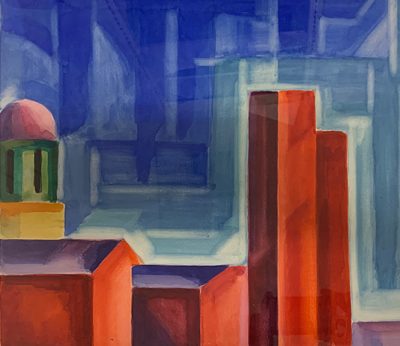
“Bluemner at Stetson: Institutional History” is curated by Katya Kudryavtseva, PhD, associate professor of art history at Stetson, and includes Bluemner’s architectural drawings, naturalistic renderings, modern artwork and archival materials. The display also includes historical information about Kouba, the Hand Art Center and the first Bluemner curator Roberta Smith Favis, PhD, professor emerita of art at Stetson.
“The Oscar Bluemner collection makes Stetson University distinctive,” said Kudryavtseva. “The display showcases the importance of celebrating and studying the historic art collection.”
“Oscar Bluemner’s artwork is one-of-a-kind and Stetson benefits from its ‘wow’ factor,” said James Pearson, MA, director of the Hand Art Center. “Having such a large collection of Bluemner’s work puts the Hand Art Center on the map among modern art collectors. The gallery is also fortunate to have a prestigious collection from a single artist.”
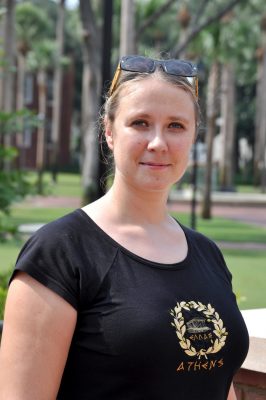
Kudryavtseva will be curating a second installment of the Bluemner exhibit during Spring 2021. The display will be devoted to the exhibition history of the collection, including the “Oscar Bluemner: A Passion for Color” exhibit at the Whitney Museum of American Art in New York. This display also will highlight curatorial projects by Favis, and Stetson’s Digital Arts and World Languages and Cultures faculty as well as art history students.
Another exhibit curated by Kudryavtseva, the “Malchish Kibalchish: The Soviet Superhero,” will be on display online as well. Kudryavtseva grew up in the Soviet Union and read “Tale of the Military Secret, Boy Malchish Kibalchish and His Firm Word” by Arkady Gaidar as a child. The 1933 book is about the fictional character Kibalchish who helped the Red Army fight the bourgeoisie during the Russian Civil War. The boy was betrayed, captured and tortured to death, and took a military secret with him to his grave.

The exhibition will include different editions, a projection of the cartoon, and merchandise and propaganda associated with Kibalchish, including posters, pins and decorative objects.
“The book character Malchish Kibalchish was popularized in cartoons and films, and on postcards, stationery and other merchandise, which turned him into a Soviet Union version of a Disney character and superhero,” said Kudryavtseva.
The exhibit explores the main character’s pervasive, ideological and commercial presence in the Soviet Union’s popular culture and its resurrection in Vladimir Putin’s modern Russia.
“There has been a resurgence in the Malchish Kibalchish’s popularity because of Russia’s military conflicts in the Ukraine and Syria,” said Kudryavtseva. “The exhibition illustrates the importance of understanding the allure of propaganda and the mechanisms that make it effective, so we can learn to resist it.”
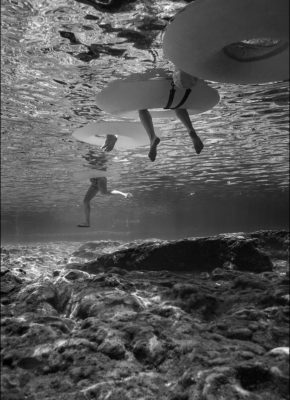
Photographers take the plunge during the “Submerged” exhibit. This multisensory display features 19 black-and-white photos of Central Florida’s natural springs taken by Alexander Diaz, MFA, associate professor of photography at the University of North Florida, and famous underwater photographer Bruce Mozert. The images are paired by soundscape audio recordings by Nathan Wolek, PhD, professor of digital arts and music technology at Stetson.

Mozert is considered a pioneer of underwater photography. He took numerous photographs of employees at Silver Springs that were used in advertisements to promote the attraction and its crystal-clear springs. Diaz’s photographs feature folks submerged in DeLeon Springs. The imagery includes bodies within the natural beauty of the spring, which are distorted by the ripples of water.
Wolek’s soundscape features audio recorded by submerged microphones in DeLeon Springs. The audio includes the natural soundscape and bodies swimming and moving in the spring. His soundscape design was created to ensure that no single moment of the audio loops in the same way twice.
Although the Hand Art Center remains closed at this time, the exhibits can be viewed online at HandArtCenter.org.
-Sandra Carr

